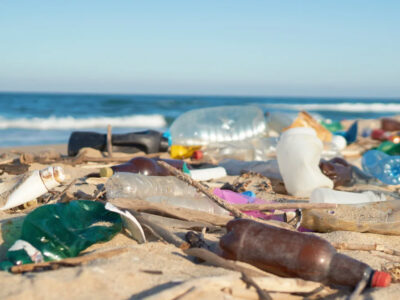Our world is increasingly plastic. Back in the 1950s, humanity produced just 5 million metric tons of plastic per year; today it’s 400 million metric tons. Since plastic can take hundreds or thousands of years to biodegrade, pretty much all of it is still around, except for the roughly 20 percent that’s been burned. By some estimates, there are now eight gigatons of accumulated plastic on Earth — twice as much as the weight of all animal life.
Much of this plastic is still in use, in products like cars and homes, but a lot is junk; 40 percent of plastic production goes toward packaging that’s typically tossed after being used once. Some of our plastic waste is recycled, responsibly incinerated or properly landfilled, but tens of millions of tons are mismanaged annually — burned in open pits or left to pollute the environment. Plastic pollution has been found at the poles and the bottom of the ocean, in our clouds and soils, in human blood and mothers’ milk. If things keep going as they are, it is predicted that annual rates of plastic flowing into the sea will triple from 2016 to 2040.

